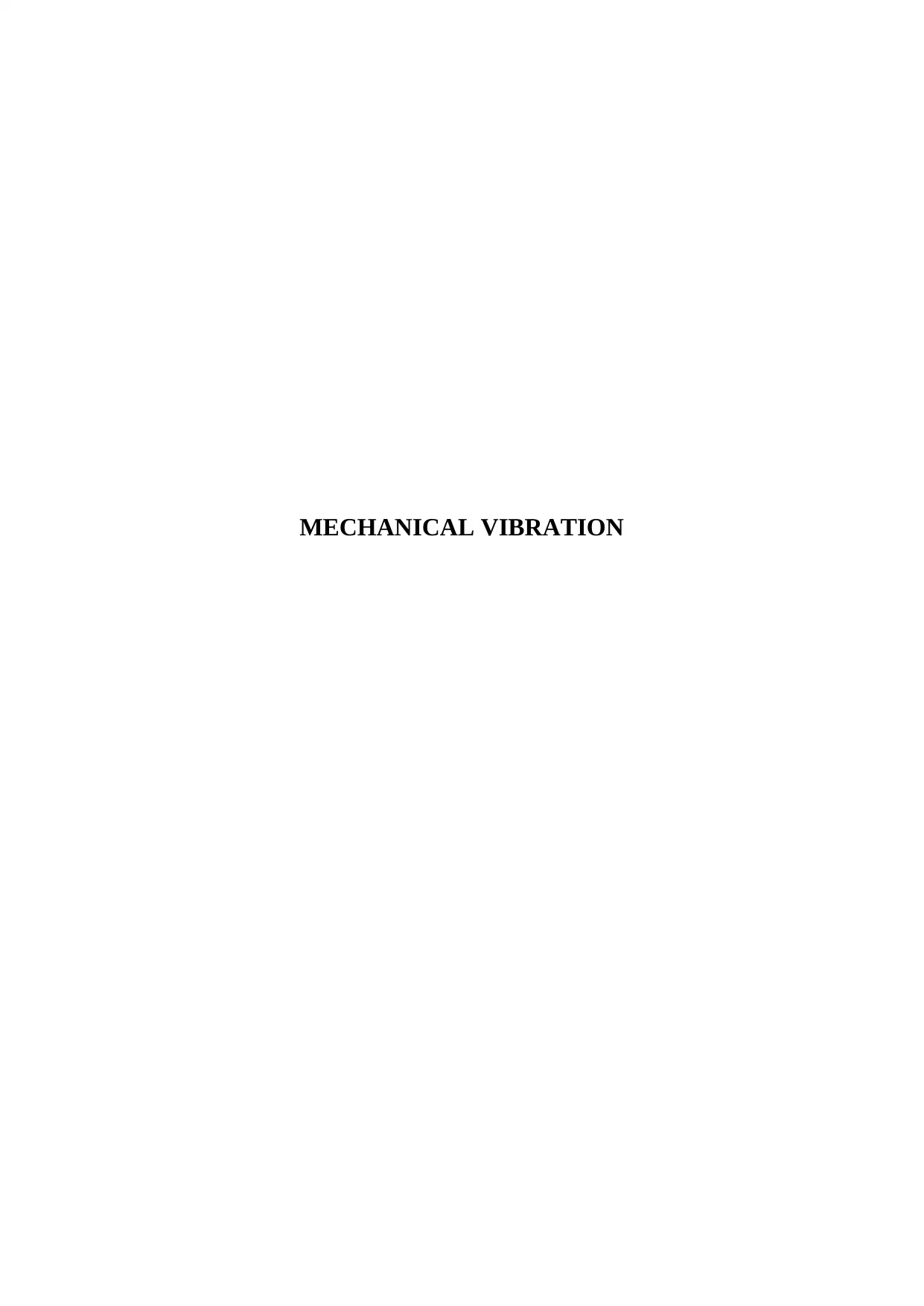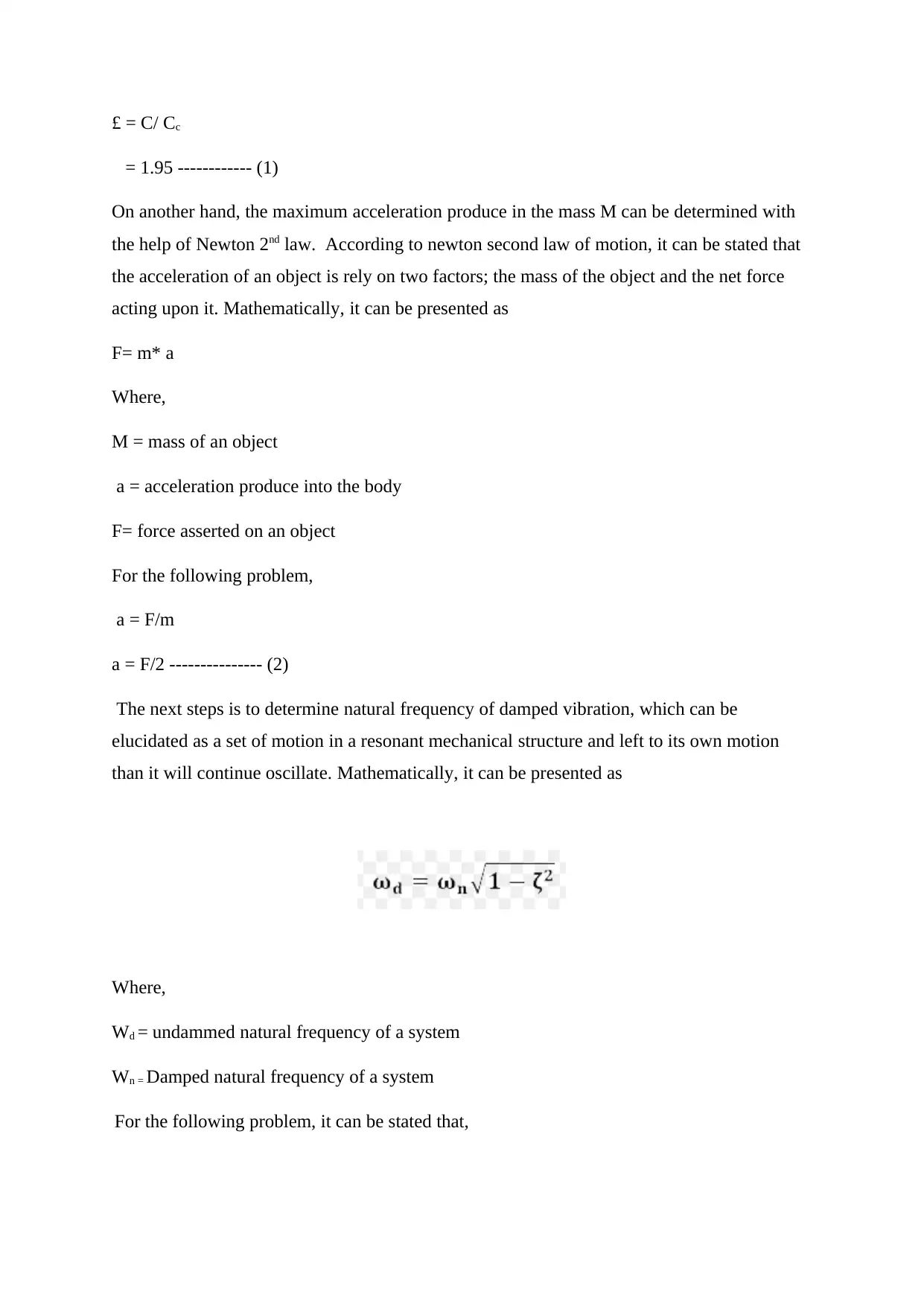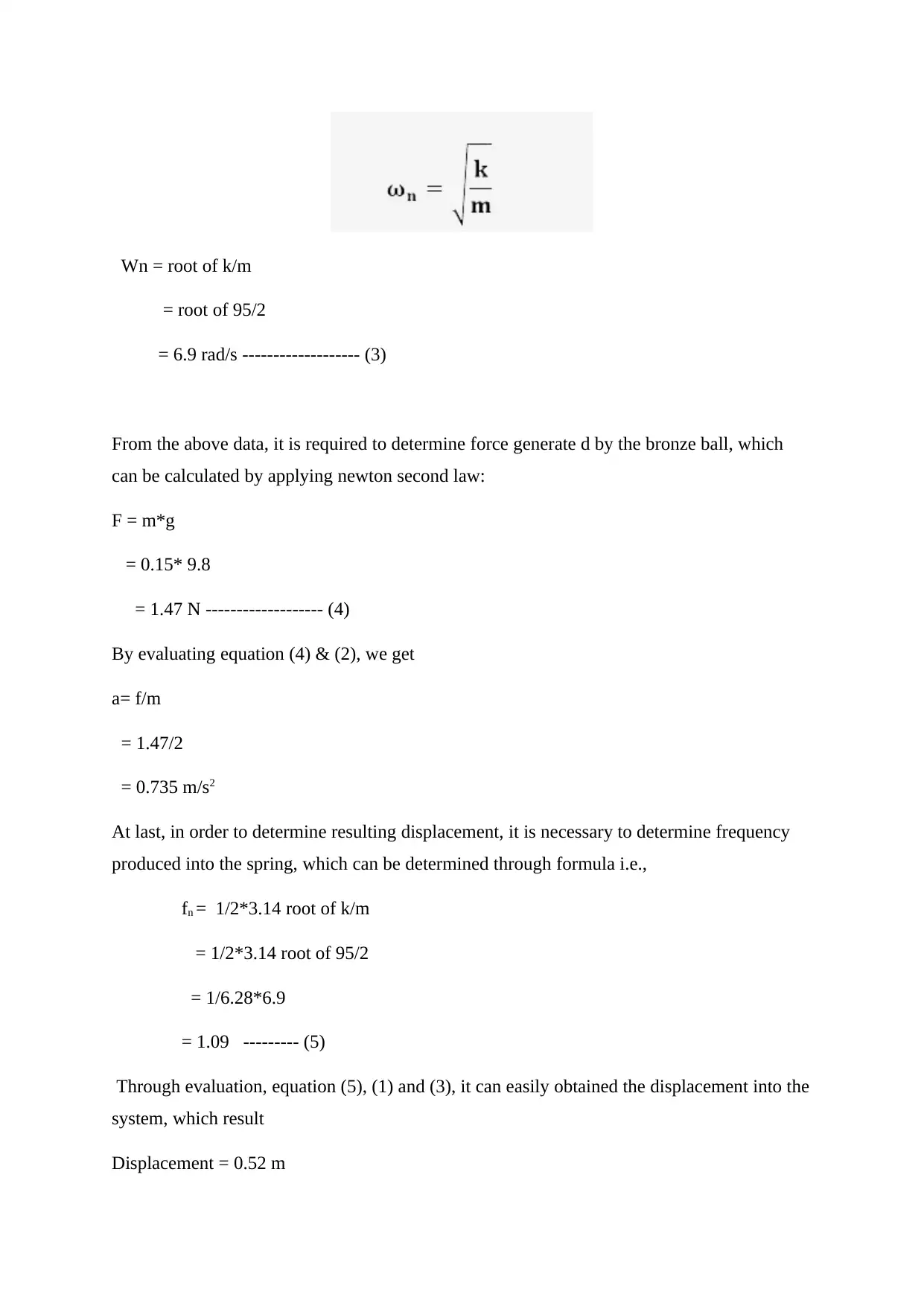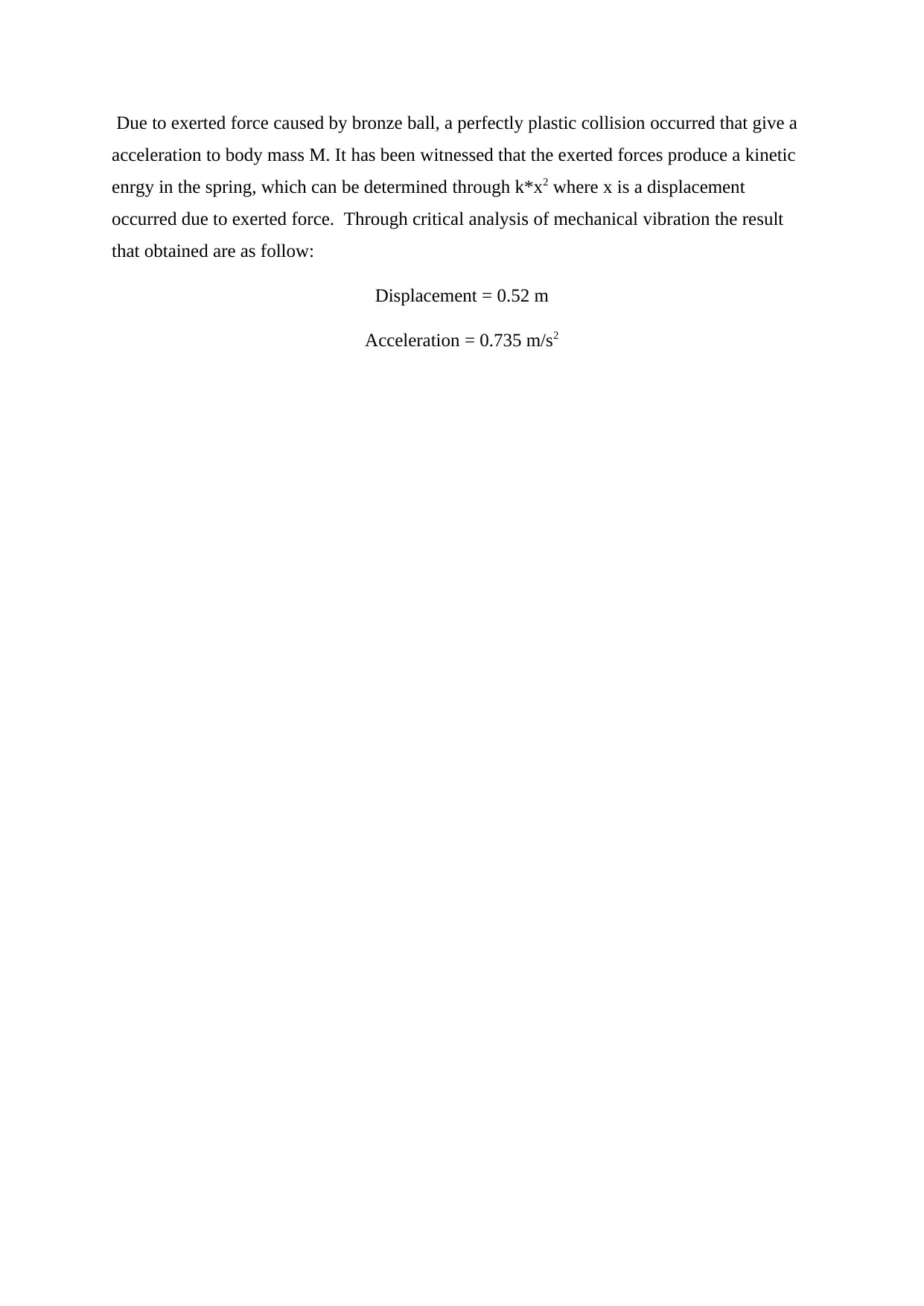Mechanical Vibration Analysis: Displacement, Acceleration, and Forces
VerifiedAdded on 2023/04/20
|5
|617
|212
Homework Assignment
AI Summary
This document presents a comprehensive solution to a mechanical vibration homework assignment. It addresses the problem of determining displacement and maximum acceleration for a mass subjected to a force, incorporating concepts like damping factor, natural frequency, and Newton's second law of motion. The solution details the step-by-step calculations, including the determination of the damping ratio, natural frequency of damped vibration, and the force generated by a bronze ball. The analysis also includes the calculation of displacement and acceleration using the provided formulas and data. The assignment explores the concept of impulse response and how to break up complicated forces into sums of simpler forces, compute the response and add to get the total solution. The final results for displacement and acceleration are presented, offering a clear understanding of the mechanical vibration problem and its solution.
1 out of 5











![[object Object]](/_next/static/media/star-bottom.7253800d.svg)